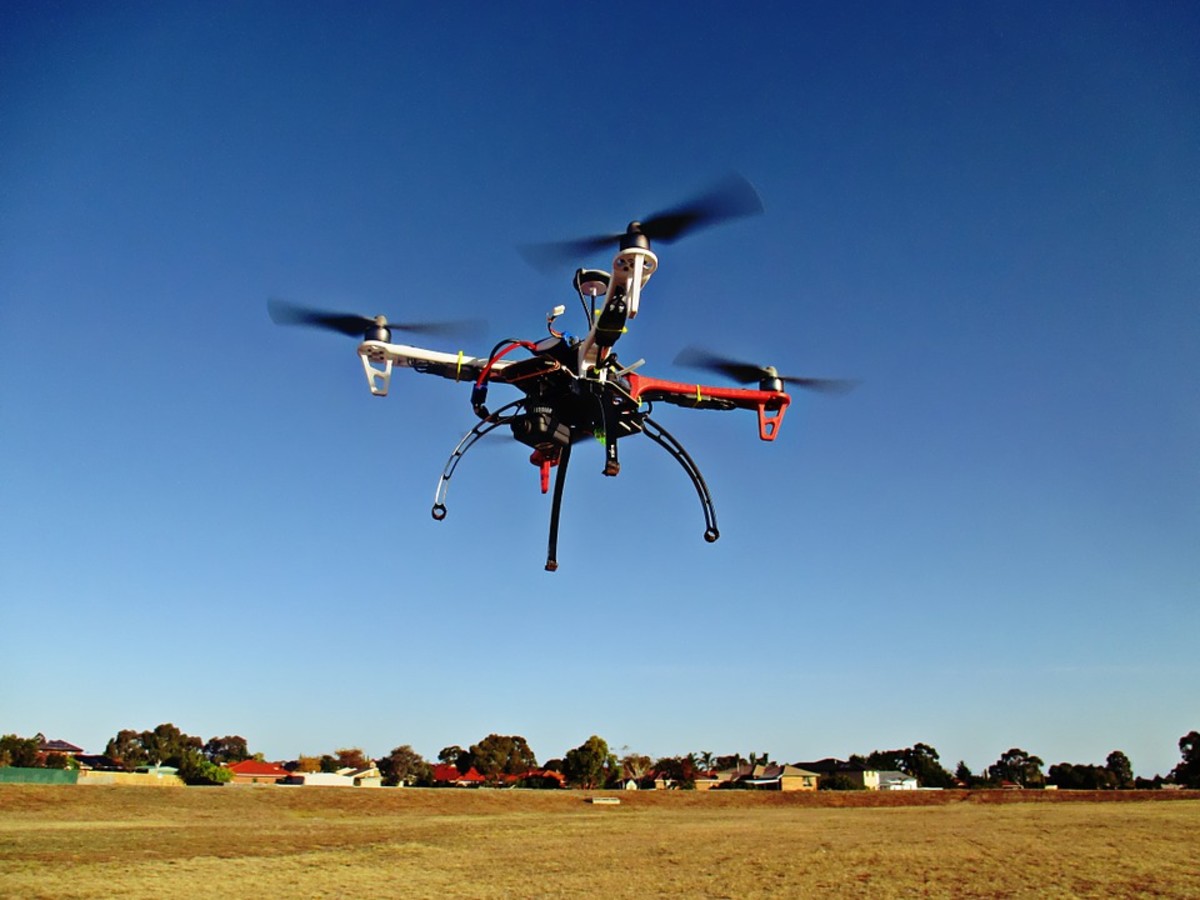That Hummingbird is not What it Seems....Drones Coming to Your Backyard
It was announced today on CNN that drones will soon be flying over our nation’s skies (a link to the story is at the end), which I already knew, but the numbers and who would be flying these drones are what I found shocking.
The FAA, the government agency that governs our airspace, announced that by 2020 it expects to have 30,000 licenses for these drones from law enforcement and private organizations.
Private organizations?
Okay, I understand some universities and organizations plan on using them for research on crops, water, etc., legitimate requests already have been filed for these areas as there are obvious advantages of drones monitoring such things as crops in Kansas for the University of Kansas Agriculture program.
Those are not the people I worry about though, we all know and worry about how the government will use them against us, but they may be the lesser threat in the long run. How does the FAA plan to monitor all of these drones, airlines and private pilots must file flight plans and follow all sorts of rules of the air?
Now I have to worry about the Home Depot drone hanging out over my backyard, gathering details on my house and then the Home Depot server sending priority e-mails and texts to me for project suggestions and reminding me that one of my floodlights in the backyard is out and that they have new hinges for my broken gate in stock. Thank you so much anyway, we go to Lowe’s.
And I thought the government was bad. Cheating on your spouse? The Trojan drone may catch you and suggest some products from their condom line with a reminder to practice safe sex. They won’t tell your spouse though, that is bad for business. But who else will know? Will they sell your information to another company, the florist maybe? And what if you don’t use their product, or rent a room at the hotel since the Holiday Inn drone caught you too?
These things are built for intelligence gathering, surveillance and monitoring – in simpler words -spying. It is not like the Kingsford drone, flying in my neighborhood notices that I am preparing to grill and sees I have no charcoal and flies me in a bag. If it were that smart, and convenient, my house would already be a computer and send for the drone.
What happens to all of this information collected and where will it go? Much less the question of if it should even be collected, but our information is already being collected and shared anyway, right.
Some of these drones will be as small as hummingbirds and will look like them too. Your patio conversation with friends on a Saturday evening may no longer be private soon, despite being in the middle of a 12 acre property.
We all know about our property lines, and in some states that includes what is under the ground, what about what is above it?
The only real laws or protection for us against invasion of privacy from the air comes from the debates as helicopters grew more prevalent in law enforcement – as portrayed in the movie Blue Thunder starring Roy Scheider. Thermal imaging cannot be used to see inside buildings or track people. They also cannot be armed. That only applies to law enforcement though, as when is the last time you worried about a news chopper spying on you or targeting you while eating dinner with your family.
Drones will change that, as they are relatively cheap, inexpensive to fly and can potentially gather audio, video, GPS, and more. Big Brother could be a corporation, or group of them, and not the government. Which is worse? I don’t know, but would rather not find out either way.
Who is going to monitor these 30,000 drones and what they are doing. Who is going to be sure that the Trojan drone isn’t thermally equipping drones in order to see what happens and how often in bedrooms everywhere. The Home Depot drone may be using it too, but only to send me evaluations on my homes’ energy efficiency. And what else did they see while doing that evaluation?
Protecting yourself is a fairly high tech endeavor itself. Camera technology is so advanced that you can be seen from space, and audio reception is there too, so it would have to be some kind of electronic jamming. It is possible to shield yourself from these drones, as long as they are not using thermal imaging. After all, the Iranians brought down one of our military drones, most likely through electronic means.
Tresspassing laws may come into play, especially if the hummingbird looking thing that flies funny, hangs out in your tree. Does that mean you can shoot it down? Maybe, depending on gun laws where you live. But most of the time these things won’t get that close or test those precedents of our privacy, because they won’t need to.
The best option is to get your own. Basically these things are nothing but high tech radio controlled planes (though modern drones do not use standard radio) that people have been flying for fun for years. You can buy prop planes, helicopters and jets, of all sizes. I even launched model rockets with cameras on them that took pictures on the way down, back in the 1970’s.
That is how drones all started. You can buy an R/C plane off the shelf and convert it to be controlled from your cell phone. You don’t need a gas powered motor either, a lot of small electric motors are quieter and widely available and can be adapted for batteries. With a bit of work you can forget the radio signals and piggyback signals off the microwave towers everywhere used for cell phones, encrypt your own codes you are flying. Add computer skills and I have a drone that can fly programmed routes and do things or record information in various forms.
I could build one to spy on the Wal-Mart drone, alert me when it is in my area, or any drone for that matter. I could monitor Trojan executives the way they would monitor us, let me see how often they use their own products. I could send my drone to the CEO of Home Depot and tell him I use Lowe’s every time it is nearby.
I could even build one with a gun to shoot down other drones, after all that is the next step in air combat – pilotless planes will be the norm. How many drones would I need to qualify as an Air Force?
Yes they are that easy to build.
The point is, I don’t think you really want me flying a drone around for my own personal information gathering, so why anyone else. My backyard is not in Afghanistan or Iraq, it is in Missouri, United States of America and I know of no declared war or terrorist insurgencies in my quiet neighborhood. So I ask, why at all?
http://www.cnn.com/video/#/video/bestoftv/2012/04/23/exp-point-markey-drones.cnn







